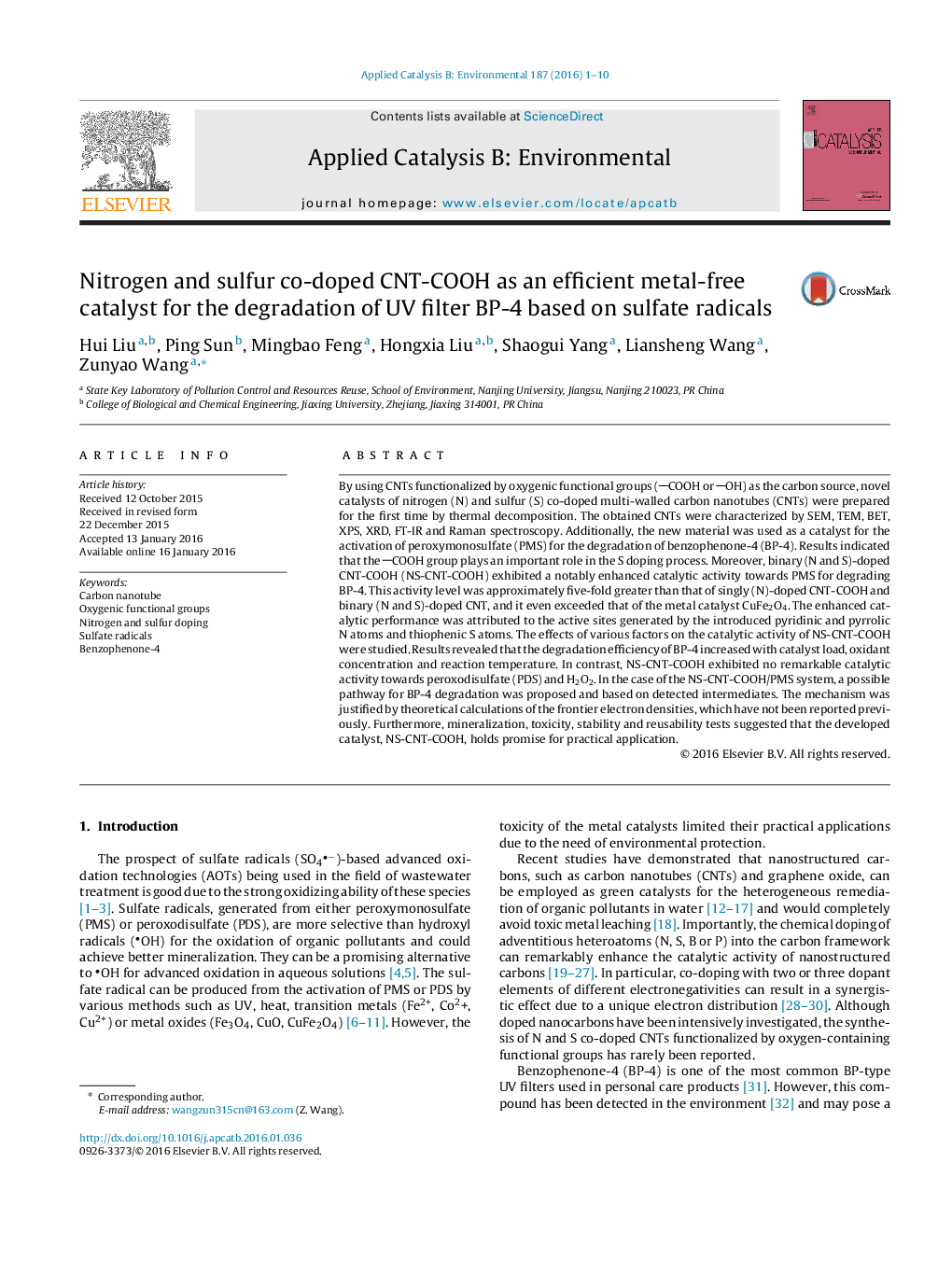| Article ID | Journal | Published Year | Pages | File Type |
|---|---|---|---|---|
| 45080 | Applied Catalysis B: Environmental | 2016 | 10 Pages |
•Co-doped CNTs with oxygenic functional groups were prepared and characterized.•The functional COOH group favored the S doping process.•N and S dopant of CNT play an important role in activation of PMS.•The degradation pathways of BP-4 in the new system were proposed.
By using CNTs functionalized by oxygenic functional groups (COOH or OH) as the carbon source, novel catalysts of nitrogen (N) and sulfur (S) co-doped multi-walled carbon nanotubes (CNTs) were prepared for the first time by thermal decomposition. The obtained CNTs were characterized by SEM, TEM, BET, XPS, XRD, FT-IR and Raman spectroscopy. Additionally, the new material was used as a catalyst for the activation of peroxymonosulfate (PMS) for the degradation of benzophenone-4 (BP-4). Results indicated that the COOH group plays an important role in the S doping process. Moreover, binary (N and S)-doped CNT-COOH (NS-CNT-COOH) exhibited a notably enhanced catalytic activity towards PMS for degrading BP-4. This activity level was approximately five-fold greater than that of singly (N)-doped CNT-COOH and binary (N and S)-doped CNT, and it even exceeded that of the metal catalyst CuFe2O4. The enhanced catalytic performance was attributed to the active sites generated by the introduced pyridinic and pyrrolic N atoms and thiophenic S atoms. The effects of various factors on the catalytic activity of NS-CNT-COOH were studied. Results revealed that the degradation efficiency of BP-4 increased with catalyst load, oxidant concentration and reaction temperature. In contrast, NS-CNT-COOH exhibited no remarkable catalytic activity towards peroxodisulfate (PDS) and H2O2. In the case of the NS-CNT-COOH/PMS system, a possible pathway for BP-4 degradation was proposed and based on detected intermediates. The mechanism was justified by theoretical calculations of the frontier electron densities, which have not been reported previously. Furthermore, mineralization, toxicity, stability and reusability tests suggested that the developed catalyst, NS-CNT-COOH, holds promise for practical application.
Graphical abstractFigure optionsDownload full-size imageDownload as PowerPoint slide
